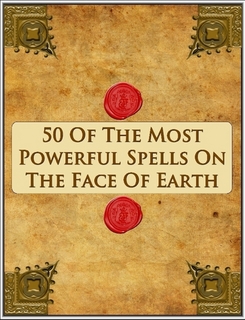Stephen Mitchell - Learning Magic in the Sagas (92.0 Kb)
 Book downloads: 664
Book downloads: 664
The image of magic spells being taught by more seasoned practitioners to others eager to learn them comports well with what can be deduced about the actual practice of witchcraft and magic in medieval Scandinavia. For example, at the conclusion of that most remarkable document on love magic, jealousy and sexual intrigue from ca. 1325, De quadam lapsa in haeresin Ragnhilda Tregagaas, Ragnhildr tregagas of Bergen claims that the incantation and performative magic she uses against her erstwhile lover are ones she learned in her... More >>>Book can be downloaded.
Note that, unfortunately, not all my books can be downloaded due to the restrictions of copyright. However, most of the books on this site do not have copyright restrictions. If you find any copyright violation, please contact me at  . I am very attentive to the issue of copyright and try to avoid any violations, but on the other hand to help all fans of magic to get access to information.
. I am very attentive to the issue of copyright and try to avoid any violations, but on the other hand to help all fans of magic to get access to information.
If you are having difficulty downloading books, or you are looking for a book that is not on the site (but maybe it is in my home library), please write me a email to

and I will try to help, I can send the book by e-mail
darkbooks.org began in early 2008 I am happy to donate my time to providing you this resource, I would also like to note, that, although I try, I do not always have enough time to deal with the site, including, unfortunately, I do not always have time to answer all letters, because I have to earn money for a living. If you can financially help me, it would free me from the worries of earning money for living, perhaps partially, but ideally completely, then all 100% of my time could be devoted to the site. Also I do pay monthly web server/files storage and hosting costs to keep this site on the air. Please consider making a donation to help me continue this activity and devote more time to it or at least offset the cost of paying for storage/hosting. Even a small contribution helps!
The image of magic spells being taught by more seasoned practitioners to others eager to learn them comports well with what can be deduced about the actual practice of witchcraft and magic in medieval Scandinavia. For example, at the conclusion of that most remarkable document on love magic, jealousy and sexual intrigue from ca. 1325, De quadam lapsa in haeresin Ragnhilda Tregagaas, Ragnhildr tregagas of Bergen claims that the incantation and performative magic she uses against her erstwhile lover are ones she learned in her youth from Solli Sukk. In a similar case from Sweden in 1471, a witch in Arboga referred to in the surviving records as galna kadhrin 'Crazy Katherine' instructs Birgitta Andirssadotthir on how to prevent her lover from pursuing another woman.Another late 15th-century Swedish case likewise describeshow Margit halffstop says that she learned from another woman, Anna finszka, the spell by which she could bewitch a man from a distance.3 The Norwegian laws, especially Borgarflings kristinrettr hinn eldri and Eidsivaflings kristinrettr, express deep concern that people should not consult with the Sami: En ef madr faer til finna is a phrase which occurs often, and would appear to mean, as Fritzner writes about it in its nominal form, finnfor, "Reise til Finnerne for at soge Hjaelp af deres Trolddomskunst." All of the terms in this complex (e.g., finnvitka 'to Finn-witch, i.e., to bewitch like a Finn [or Sami]'), terms which seem only to appear in Norwegian and Icelandic sources, turn on the presumed greater skill, magic or learning of the Sami, and the practice of their sharing this learning or its outcome with others. This is precisely the sort of scene presented vividly in Vatnsdaela saga, when Ingimundr, Grimr and their men inquire of a visiting Sami witch ("Finna ein fj?lkunnig") about their futures.6 In addition to such testimony targetting the "lower" practices of magic, church statutes (e.g., the Arboga statute of 1412) and other ecclesiastical writing (e.g., the late 13th-century Fornsvenska legendariet) often cite the existence of grimoires (fj?lkyngisbaekr, galdrabaekr) and other learning aids associated with "high" magic.7 Nordic books of this sort are in fact known, albeit only from the post-medieval period,8 and are frequently mentioned in legends and other folklore texts (e.g., Raudskinna),9 suggesting wide-spread familiarity with the idea. A fully developed narrative about such a magic book is found in the 14thcentury story of the Skalholt bishop Jon Halldorsson.10 That the idea of learned clerics dabbling in the magical arts ran deep in the Middle Ages is also to be seen in the theme of "Escape from the Black School" (ML 3000), found in connection with Saemundr the Wise already in Jons saga helga.



 Book downloads: 664
Book downloads: 664
 . I am very attentive to the issue of copyright and try to avoid any violations, but on the other hand to help all fans of magic to get access to information.
. I am very attentive to the issue of copyright and try to avoid any violations, but on the other hand to help all fans of magic to get access to information.
 and I will try to help, I can send the book by e-mail
and I will try to help, I can send the book by e-mail